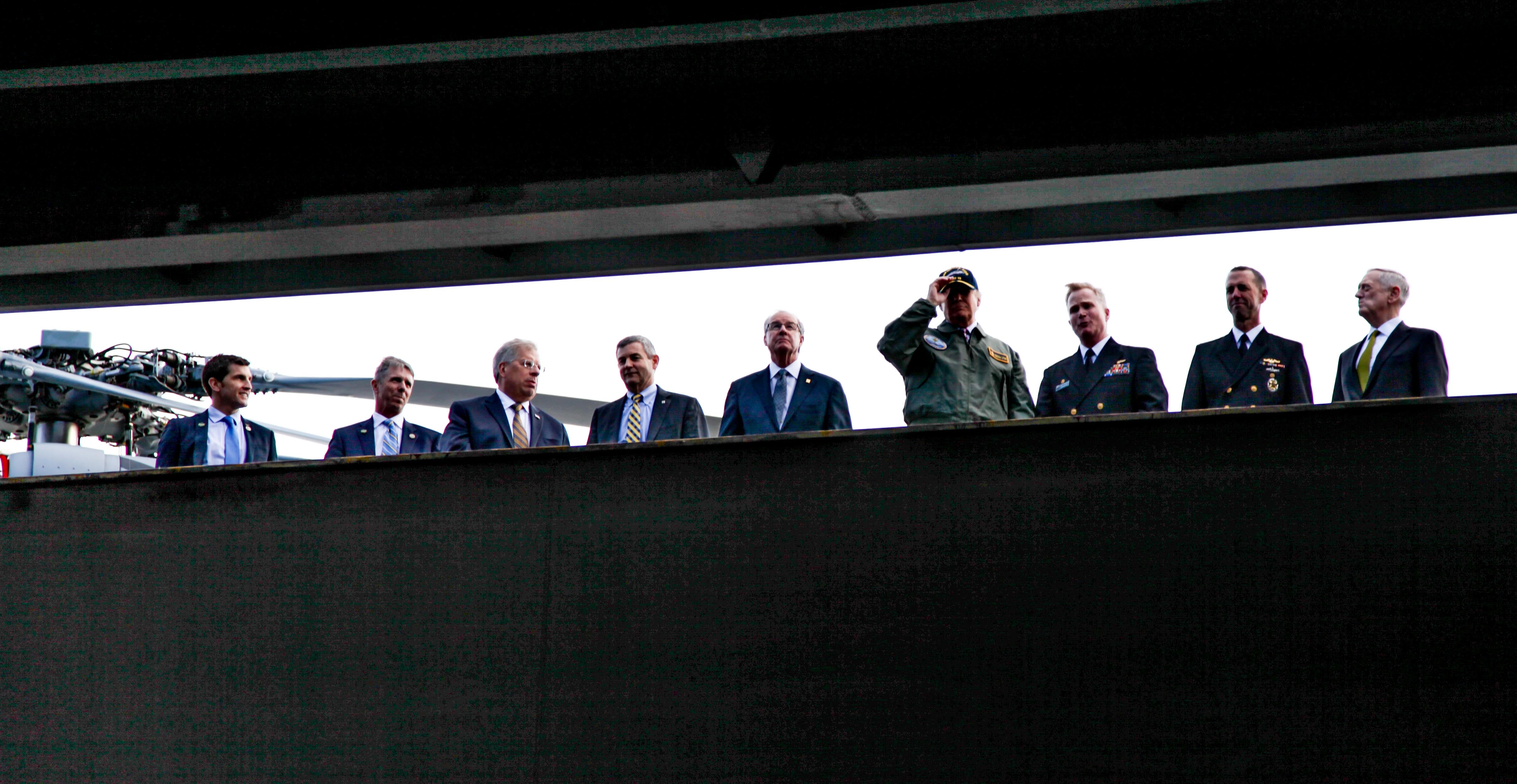WASHINGTON — President Trump painted an overly bleak picture of the condition of the armed forces as he made his case for military expansion.
Take a look at some of the commander in chief's statements from the Gerald R. Ford, a $12.9 billion aircraft carrier being built in Newport News, Virginia:
TRUMP: "We are going to have very soon the finest equipment in the world."
THE FACTS: Pentagon leaders have said for years that the U.S. already has the world's best weaponry and military equipment. They sometimes claim the U.S. is in danger of losing its advantage unless Congress continues to spend heavily to develop and build new-generation weapons.
The Navy's top officer, Adm. John Richardson, has said repeatedly that the Navy is the world's finest. He also has said the Navy must adapt to a world of changing security threats. Richardson's main focus has been on sharpening and changing the way sailors think about the nature of war, rather than relying on bigger budgets.
"We will not be able to 'buy' our way out of the challenges that we face," he wrote in a January 2016 plan for maintaining U.S. naval superiority.
TRUMP: "This great aircraft carrier provides essential capabilities to keep us safe from terrorism and take the fight to the enemy for many years in the future."
THE FACTS: Aircraft carriers are not the crucial element in the defense against terrorism. They do provide a flexible means of bringing warplanes and intelligence-gathering aircraft to areas where terrorists are being hunted, like off the coast of Libya or in the Persian Gulf, but their main function is to deter bigger wars with state powers like China, Russia and North Korea. The Pentagon's counterterrorism campaigns rely more on special operations forces, Air Force fighters and surveillance drones, military trainers and advisers, and the intelligence agencies.
TRUMP: "I am calling for one of the largest defense spending increases in history."
THE FACTS: Three times in recent years, Congress raised military spending by larger amounts, in percentage terms, than the $54 billion, or 10 percent, increase that Trump proposes. The base defense budget grew by $41 billion, or 14.3 percent, in 2002; by $37 billion, or 11.3 percent, in 2003, and by $47 billion, or 10.9 percent, in 2008, according to Defense Department figures.
The proposed expansion pales in comparison with skyrocketing increases in earlier times. Military spending consumed 43 percent of the economy in 1944 during World War II and 15 percent in 1952 during the Korean War. It was 3.3 percent in 2015, according to the World Bank.
Also of note: The Navy's fleet may grow more than planned if Trump's military expansion is approved by Congress. But no one is talking about matching — much less exceeding — the enormous armada of another age. The number of Navy personnel has also fallen over time, from more than 725,000 in 1954 to about 323,000 now.
Associated Press writers Jim Drinkard and Cal Woodward contributed to this report.





